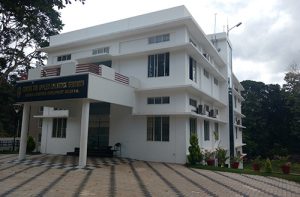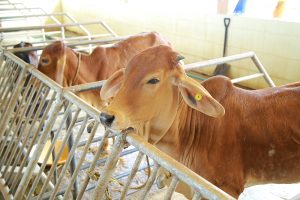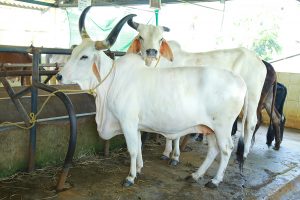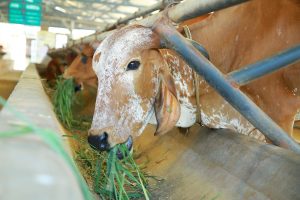“As live stock population is the asset of the state in terms of economic and social development Kerala Livestock Development Board (KLDB) adopted different special schemes aimed to enhance the wellbeing, conservation and production of live stock in Kerala”
Activities taken up under special schemes
| Further development of the Sunandini through genetic selection, progeny testing and herd book organization |
| Continued R & D programmes to support frozen semen production, embryo transfer, progeny testing, etc. for the tropical conditions |
| R & D programmes to identify suitable perennial varieties of grasses and legumes that can come up well under the mixed farming |
| Supporting farmers for the production of fodder seeds as a viable enterprise |
| Developing soil conservation methods using fodder cultivation as a means |
| Sharing the Board’s experience with other similar departments/organisations in various parts of the country through training programmes |
| Development of Malabari and Boer goats for prolificacy and weight gain |
| Produce and supply hybrid piglets through scientific breeding and selection practices |
Rashtriya Gokul Mission
Objectives
a) To undertake breed improvement programme for Indigenous Breeds so as to improve the genetic makeup and increase the stock.
b) To enhance milk production and productivity of Indigenous Bovines.
c) To upgrade nondescript cattle using elite indigenous breeds like Gir, Sahiwal, Rathi, Deoni, Tharparkar, Red Sindhi.
d) To distribute disease free high genetic merit bulls of indigenous breeds for natural service.
State Implementing Agency (SIA) – Kerala Livestock Development Board
National Programme for Bovine Breeding
The KLD Board has been nominated as the State Implementing Agency (SIA) of this 100% Centrally Sponsored Scheme.
Through the implementation of NPBB in Kerala, the State expects to achieve a better AI coverage through which the genetic potential of the animals are expected to increase. Milk production being the major requirement from cattle, the basic goal of genetic improvement would be for milk production traits.
Objectives
| Radically improving coverage of bovine population under organized breeding programmes through AI using frozen semen |
| Delivery of AI inputs at the doorstep of the farmer |
| Improvement in quality of breeding bulls used |
| Strict quality control of services and inputs |
| Optimum capacity utilization in institutional infrastructure |
| Developing synergies among major players |
| Putting in place field recording and progeny testing programmes to identify and propagate superior germplasm for genetic improvement |
| Training and retraining of professionals and AI workers |
Centre for Applied Livestock Genomics

General Objectives
- Genomic selection is producing profound changes in dairy cattle market since reliable breeding values, which double the reliability of the pedigree index, can be obtained much earlier in an animal’s life. As a result, genetic gains of properly designed genomic programs are considerably larger than genetic gains obtained with traditional approaches.
- Improving the breeding standards of the animals and thereby realizing a faster gain and growth rate in milk production of the State.
- Establish the ability and capability of the livestock sector in the State to utilise this technology.
- Develop national and international collaboration in the field of genomics for animal breeding applications in the State.
Specific objectives
- Enable early selection of bull calves based on genomic data, by employing genetic selection in primary selected young bulls before distributing its semen.
- Check the entry of bulls with undesirable genetic combination for milk production, thereby assuring desirable genetic constitution of the future dairy cattle.
- Publication of Estimated Breeding Value (EBV) based on pedigree and DNA sequence information of all young bulls prior to large-scale use for Artificial Insemination (AI).
- Reduce the cost of rearing of male calves to produce required number of AI bulls and proven sires
- Reduce the generation interval considerably thereby increasing annual genetic gain
- Increase the accuracy of selection by increasing the number of daughters per sire
- Increase the intensity of selection by reducing the proportion of superior male calves selected
- Reduce the rate of inbreeding by employing genome scanning and by implementing systematic breeding programme. (It can identify the parents with complementary DNA profiles.)
- Selection of replacement bull mothers with desirable gene combination at DNA level in the bull mother farm and elite cows in the progeny testing area
- Screening of carriers of genetic diseases in the breeding herd
- Parentage testing and DNA finger printing
- Trace animals or animal products
- Species identification of tissues of animal origin
- The infrastructure in the laboratory can be spared for vetero-legal and forensic aspects
- The laboratory will act as referral laboratory for Southern states to carry out screening of the genetic diseases of frozen semen stations


